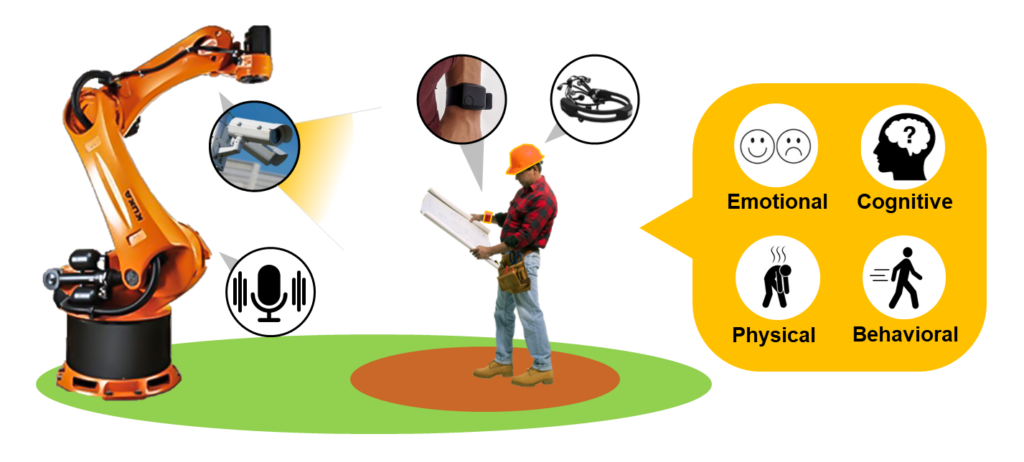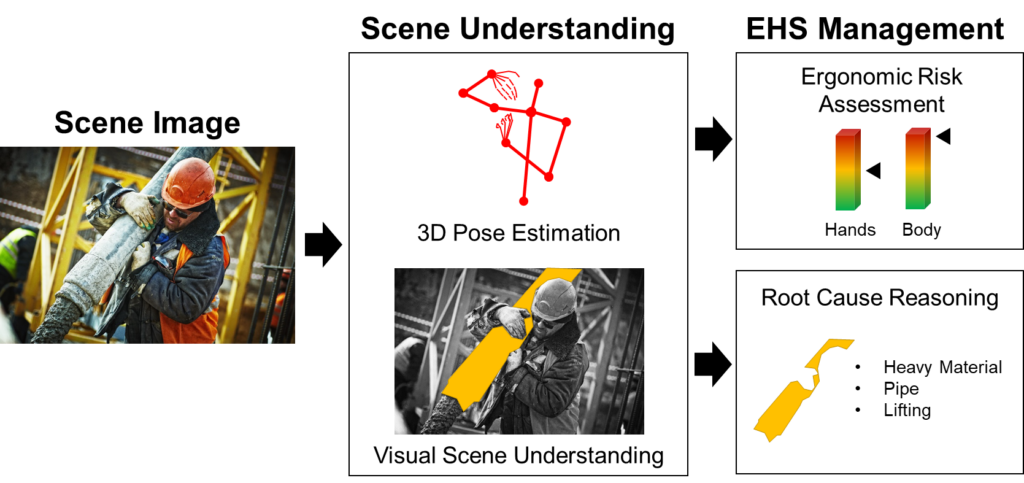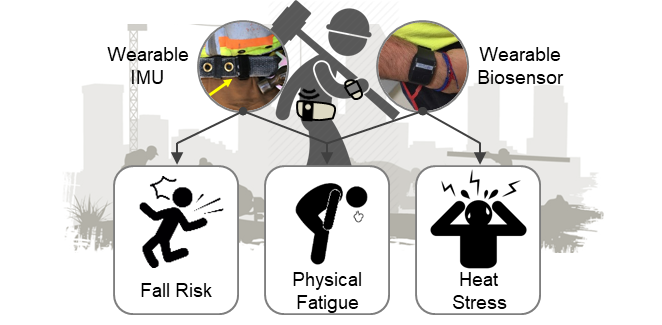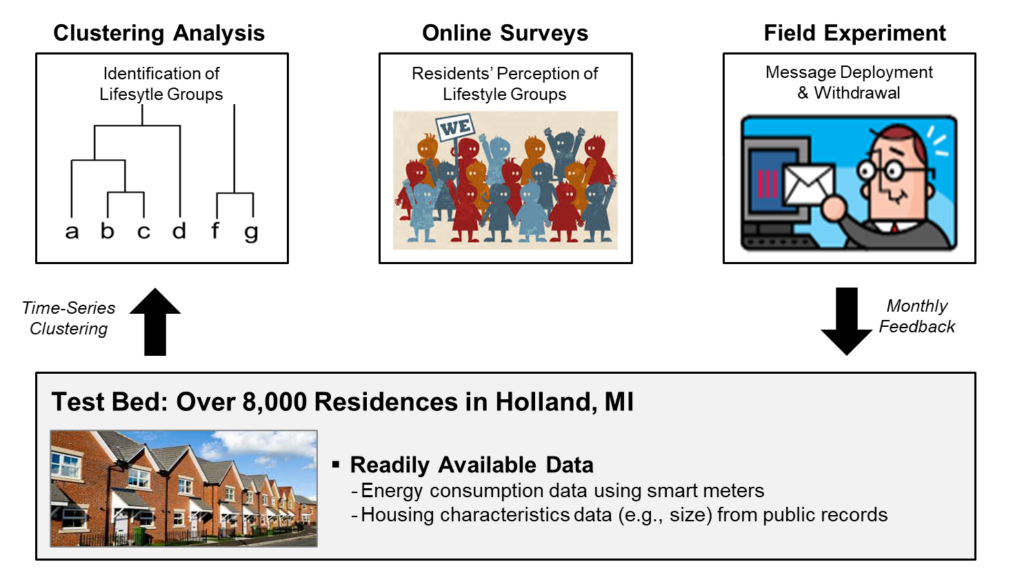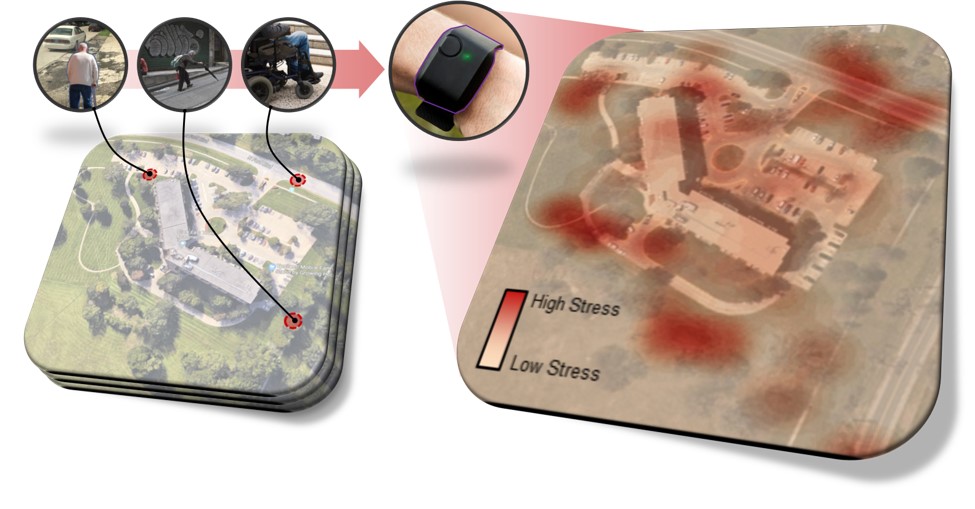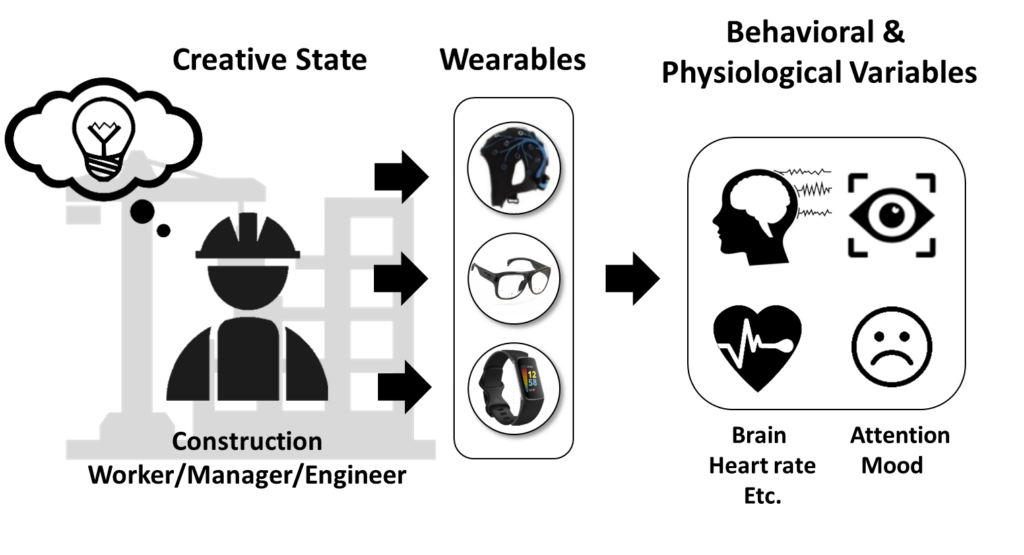Empathetic Robot Collaboration in Construction
Human-Robot Collaboration (HRC) is an emerging dynamic of work in construction. The physical capabilities of robots are expected to create synergy with humans to alleviate many ongoing problems in the construction industry, including high safety risk, an aging workforce, and labor shortage. However, the deployment of HRC usually lacks a very important factor of collaboration: empathy. Robots usually do not consider human responses. Collaborating with robots can be an unfavorable experience for some people, which can negatively affect worker performance. Nevertheless, in many cases, robots just passively and apathetically execute commands, even though their behaviors in executing commands can be influential to human responses. Without empathy, HRC can be a new source of problems, threatening the safety and productivity of the industry. We explore an empathetic robot collaboration in construction. Our research consists of two phases. First, we propose to investigate comprehensive human responses to the collaborating robots in HRC. We investigate the use of multimodal sensors to monitor humans from various perspectives. Grounded on the comprehensive human responses to robots, in the second phase, we propose to implement empathetic robot behaviors. Overall, we aim to demonstrate the effectiveness of empathetic robot collaboration in construction for more favorable and cohesive collaboration between humans and robots and for safer and more productive construction.
● Sponsor: 
AI-based EHS Management
It is important for industries to consider workers’ well-being. Healthy and energetic workers are able to maintain the quality of their lives as well as vitalize the performance of their industries. However, safety risk is a major factor threatening the well-being of workers in many industries, especially in industries which impose high physical demands on workers in harsh working conditions, such as construction. Thoroughly identifying potential worker safety risks can improve the likelihood of avoiding continuous threats. Several industries seek to implement Environment, Health, and Safety (EHS) management systems, an emerging set of regulations for prioritizing workers’ health and safety through the improvement of the working environment. Our research aims to improve EHS management systems by utilizing state-of-the-art artificial intelligence (AI) techniques, including deep learning and AI-based reasoning. Our current scope of the research focuses on improving poor ergonomic postures of workers, which are major contributors to work-related musculoskeletal disorders (WMSDs). Our research aims to: i) recognize potentially hazardous ergonomics of body parts; and ii) identify the root causes of such poor ergonomics with the purpose of preventing continued threats to workers’ safety and health. Through our research, we aim to contribute to better EHS management for the well-being of workers. We believe our findings can be a great stepping stone for improving the environment, health, and safety of many industries.
● Sponsor: 
Potential of Wearable Technologies to Measure Fall Risk, Fatigue, and Heat Stress for Preventive Job Site Safety
Wearable devices such as heart rate (HR) sensors and inertial measurement units (IMU) sensors can greatly improve construction workers’ safety and health by monitoring their physical and mental status during work. While wearables are gradually being deployed for health and safety on job sites, current applications focus on reacting to accidents — for example, fall detection and SOS calling in a smart watch — rather than accident prevention. Given that construction accidents often lead to severe injuries or fatalities, proactively managing safety risks can be more effective for maintaining job site safety. In this context, we explore the use of wearable sensors to proactively identify and address potential risks for construction workers, such as fall risk, physical fatigue, and heat stress, using recent advancements’ in machine learning, signal processing techniques, and psychophysiological theories. We also investigate how such real-time risk information gathered by wearable sensors can be utilized to help workers adopt safer behavior with social influence theory, such as providing normative feedback via mobile applications. The outcome of this project will contribute to construction sites’ preventive safety by empowering proactive interventions that help workers voluntarily alleviate risks before accidents happen.
● Sponsor: 
Social Influence in Temporary Organizations
In organizations, social influence plays an important role in shaping how people think, behave, and make decisions, which significantly impacts their performance. Therefore, helping employees establish positive social norms and social identity in work environments is essential for the success of organizations, including temporary organizations such as construction projects. However, construction projects have unique characteristics(e.g., multiple organizational memberships, pre-defined limited duration, and task-oriented relationships) that make the social influence process more complex and difficult to apply. To address these issues, we aim to investigate how the unique features of the temporary organization affect social influence processes and project participants’ behaviors. Specifically, we investigate social norms and organizational identification in relation to safety behavior using various quantitative methods, such as traditional surveys and statistical analyses, computer simulations of organizational behavior, and field experiments. We are also interested in developing affordable managerial interventions to improve workers’ safety behavior via project identification.
● Sponsor: 
Non-Invasive Personalized Normative Messaging Intervention for the Reduction of Household Energy Consumption
Social norm theory states that individuals adjust their behavior to match the norms of the groups they belong to, with more personalized groups being more effective at shaping behavior. Social norm intervention aimed at reducing household energy consumption is becoming an evidence-based approach, encouraging people to adjust their energy consumption to align with the norm of their social groups. Householders’ energy consumption has typically been compared to that of their neighbors, but recent advances in energy grid infrastructure, such as smart meters and cloud computing, have made it possible to group householders by similar lifestyles, which allows for providing more personalized normative feedback in a non-invasive way. However, it is still unclear to what extent energy reduction will be achieved through personalized normative intervention messages. This research investigates how effective lifestyle-based normative intervention is in reducing energy consumption compared to neighbor-based normative intervention and determines how long the effects last after the intervention, experimenting with more than 6,000 households. This research aims to craft effective personalized messaging interventions for reducing household energy consumption, which can be implemented on a large scale in a cost-free manner.
● Sponsor: 
Mobile Application-based Intervention Using Urban Sensing to Facilitate Older Adults’ Walking in the Built Environment
Older adults’ ability to walk is limited in the built environment due to the physical impairment that accompanies the aging progress. This decrease in physical capability puts older adults at increased risk of stressful interaction, especially because existing built environmental systems target the average person. In particular, stressful interactions with environmental barriers, such as steep stairs, uneven surfaces, and blocked sidewalks, foster the tendency of older adults to avoid walking outdoors. It is imperative to understand the stressful interactions older adults face in the built environment and further develop interventions to improve their daily walking. We have developed a wearable biosensor-based framework to monitor stressful interactions and identify predominantly stressful locations by applying signal processing, pattern recognition algorithms, and geographical information system. Working from this framework, the goal of the upcoming phase is to develop a mobile map application to facilitate older adults’ walking. The interface and functionality of the application will be tailored for older adults’ accessibility and usability in order to optimize the benefits of recent mobile and wearable technology. Ultimately, this project could contribute to improving older adults’ walking while mitigating stressful interactions in the built environment.
● Sponsor: 
Fall Risk and Hazard Monitoring in People’s Daily Lives with Wearable Motion Sensor and Biosensor
Fall prevention is a critical concern in healthcare and safety, as falls can lead to serious injuries and even death. Recent advancements in wearable technology such as inertial measurement units (IMUs) and insole pressure sensors have been used to monitor fall risk quantitatively and continuously. These sensors measure gait features and detect gait irregularities as an indicator of fall risk. However, current methods have limitations: they cannot differentiate gait irregularities associated with fall risks from intended normal walking with gait irregularities (e.g., stopping walking to change speed or direction) and require users to wear sensors on their ankles or feet, which can be intrusive in their daily lives. To address these challenges, this research aims to investigate the correlation between physical and physiological responses to exposure to fall hazards and to develop a more effective fall risk assessment system by using wristband-type motion sensors and biosensors. This research project also aims to identify environmental fall hazards by incorporating geolocating sensors, which track users’ real-time locations with fall risk assessment. If successful, this research has the potential to reduce the number of fall injuries and the associated medical, social, and financial costs by improving automated fall risk and hazard monitoring in daily living.
● Sponsor: 
Toward a Neurobiological Understanding of Creative Traits and Creative States: A Cross-domain Approach
The construction industry has long struggled with issues such as high rates of injury and death, stagnant productivity, and a shortage of skilled labor. To address these long-standing challenges, the industry is turning to robotic automation, specifically human-robot collaboration (HRC), in which robots take on dangerous, physically demanding, or repetitive tasks, freeing up human workers to focus on tasks requiring specialized skills and creativity. Research has shown that robots can be effective in construction settings, and there are established ways to train human workers in construction skills such as apprenticeship, but there is little understanding of human creativity in the construction context. Our preliminary study suggests that being creative can be important in many aspects of daily work on construction sites, including in problem-solving, adaptability in dynamic situations, and identifying new opportunities. To gain a deeper understanding of creativity in a construction setting, we intend to characterize individuals’ creativity by identifying behavioral and physiological variables that predict creative states during work. Specifically, we will monitor physiological changes during creative endeavors using wearable sensors. Ultimately, we are interested in understanding and improving humans’ creative performance at construction sites.
This study is a part of a multi-disciplinary project collaborating toward a common goal: make greater creativity accessible to everyone. To this end, a collaborative team from three domains (visual art, grant writing, and construction) is working closely to understand creativity in each domain as well as human creativity in general.
● Sponsor: 
Early Defect Detection and Supply Chain Management for Volumetric Modular Construction Projects
Prefabricated Prefinished Volumetric Construction (PPVC) is an innovative construction process where large building modules (e.g., a bathroom) are manufactured and furnished off-site in factories and then transported to construction sites for installation. Compared to traditional in-situ construction processes, PPVC offers significant cost and schedule reduction, since more work can be conducted off-site and in parallel. However, the unique characteristics of PPVC also lead to new challenges in practice. The large module dimension and long distance between factory and site make module transportation and storage a major challenge. Additionally, the limited on-site resources and compressed schedule caused by off-site manufacturing make any unnoticed module defects costly to repair and disruptive to the overall schedule. This research aims to find practical solutions for these unique PPVC challenges by using computer vision, blockchain, and reinforcement learning. Specifically, we develop a blockchain-driven computational framework that can maintain a single, reliable source of project information for all project participants and uses smart contracts to automatically make informed logistical decisions for PPVC projects.
● Sponsor: Pending
Safe Human-Robot Collaboration in Construction
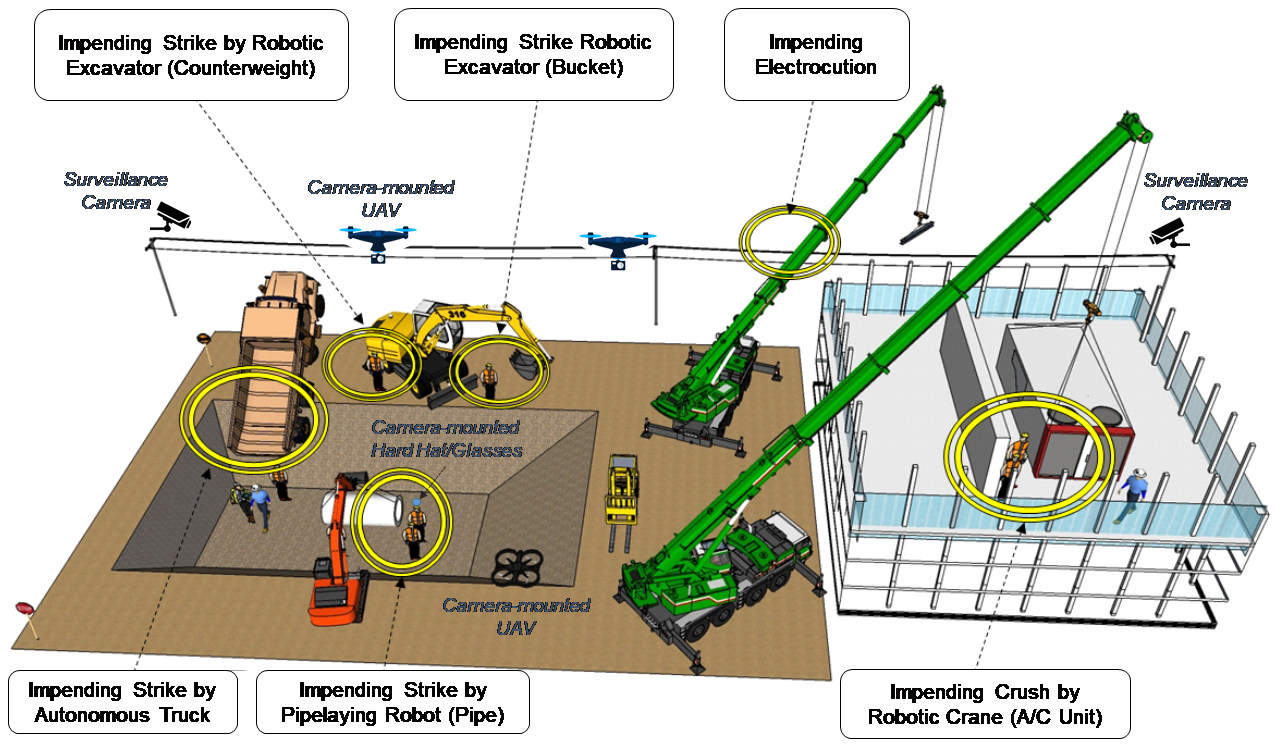
The construction industry has the highest number of fatalities and injuries due to hazardous working conditions. The introduction of robots on construction sites has the potential to relieve human workers from dangerous and repetitive tasks by making machines intelligent and autonomous. However, robotic solutions for construction face significant challenges. Construction robots must be highly mobile and collaborative, and must be able to adapt to their unstructured and dynamic surroundings. Robotic scene understanding is thus a critical concern for human workers, who will not accept co-robots that do not project complete safety and trust in environments where the consequences of failure could be disastrous. In this research, automated monitoring and intervention through computer vision is pursued to provide a means to dramatically improve the perception of construction safety in the presence of co-robots. The new methods developed in this project have the potential to impact computer vision, machine learning, and effective human-robot collaboration in unstructured environments, while significantly contributing to safety.
● Sponsor: 
Digital Twin for Robotic Construction
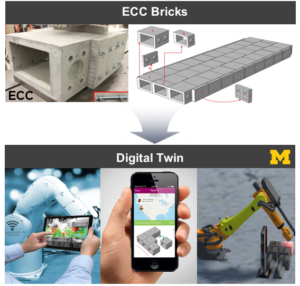
We collaborate with UM researchers who create high-quality damage-tolerant sensor embedded bricks, known as Engineered Cementitious Concrete (ECC) bricks. These ECC bricks are designed and 3D printed in plants and transported to construction sites, which can be assembled into facilities/infrastructure with robots. At the end of life of the facility/infrastructure, these bricks will be disassembled robotically and will be moved to another construction site or reconfigured in the plant to be used for other facility/infrastructure. We aim to create a digital twin for manufacturing, logistics, and construction as a backbone framework to automatically control this process. Given that these ECC bricks can be aware of their status with sensors, a novel digital replica of a life cycle of this new construction will greatly contribute to such robotic construction.
● Sponsors: ![]()
![]()
Blockchain-based Smart Project Delivery and Value Generation for Infrastructure Finance

The construction industry has made a significant effort to digitize the building and occupant data generated during a whole life cycle of a project (e.g., design, prefabrication, construction, operation, maintenance, and demolition phases). The digitized data helps not only to facilitate efficient management of building, but also to improve collaboration between a construction project’s participants. It is, however, difficult to continuously and efficiently collect, validate and update building information, mainly due to fragmentation in the construction industry. To address this issue, we propose a blockchain-based smart project delivery by leveraging BIM and IoTs with decentralized, shared, and immutable data exchange. Particularly, we are interested in creating and transferring value generated from such data. This value is expected to create a new business opportunity to fund new construction, while also facilitating the rehabilitation of existing infrastructure to improve our quality of life.
● Sponsor: 
Past Research
Below are several examples of past research projects. These are a basis for the above current research, and DPM is also active in extending these past projects. Their results can be found in Publications.
- On-site Marker-less Motion Capture and Activity Analysis
- Wearable Biosensors-based Measurement of Workers’ Physical and Mental Status
- IMU-based Heavy Equipment Cycle and Productivity Measurement
- Durability and Effect of Social Networks in Behavior Interventions in Residential Energy Consumption
- Quantification and Mitigation of Environmental Impact from Construction Processes
- Virtual Prototyping of Human-Robot Collaboration in Unstructured Construction Environments
- Automatic Behavior Monitoring for In-depth Analysis of Construction Fatalities and Injuries
- Disaster Preparedness and Response System for Facility Management Using a Distributed and Open Simulation Platform
- Interface Management
- Cross-level Feedback between Individual Absence Behavior and Absence Culture in the Construction Industry
- Synthetic Environment for Steel Construction
- Hybrid System Dynamics and Discrete Event Simulation for Large-scale Construction Management
- Quality and Change Management in Large-scale Construction Projects
